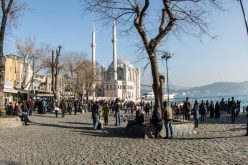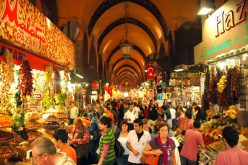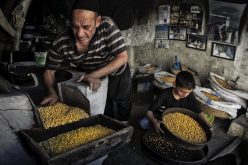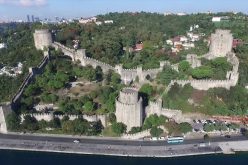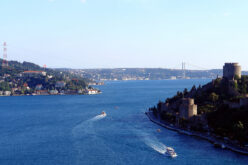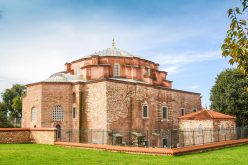Istanbul Grand Bazaar
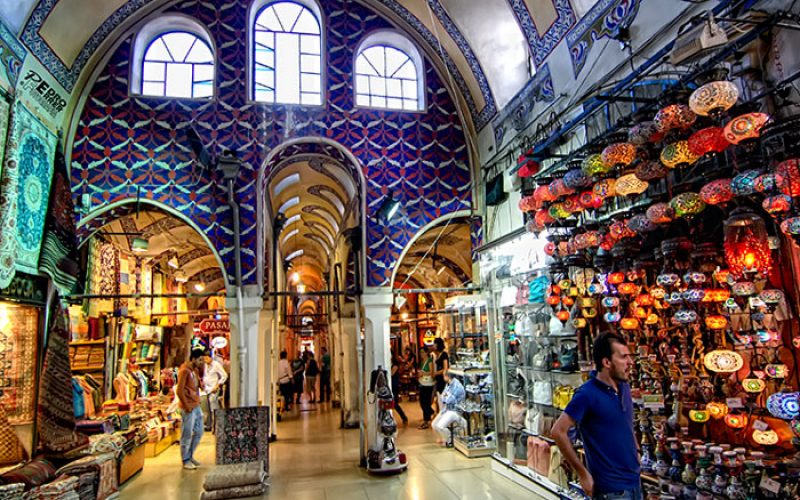
Istanbul Grand Bazaar
Istanbul Grand Bazaar is very high on most tourists’ itineraries, and with good reason. This enormous site is the largest still-existing covered oldest indoor market in the world, spanning an area of tens of thousands of square meters. While the layout of the Bazaar is relatively geometric (in comparison to say the famously labyrinthine medina of Fez), the size of the place and the profusion of goods for sale still make it easy to lose one’s bearings. The Bazaar can boast a total of 64 streets and no fewer than 22 entrances, the most commonly used ones being the Beyazıt Kapısı and the Nuruosmaniye Kapısı.
The original historical core of the Bazaar is the İç Bedesten, completed by Mehmet II (or Mehmet the Conqueror) in 1461. A bedesten (the word is a Persian borrowing) refers to an indoor arcade with shops; the İç Bedesten or Interior Bedesten has thus become a building-within-a-building in the Grand Bazaar. This area, the oldest section of the entire Bazaar, is also known as the Cevahir Bedesteni or Jewel Bedesten, as jewels, gold, and other precious items were, and still are, sold within its well-guarded precincts. The second oldest part of the bazaar is the Sandal Bedesteni further to the Northeast, also called the Yeni (New) Bedesten since it was built later than the İç Bedesten. The name of the Sandal Bedesteni is a bit deceptive. It was originally a place to buy not boats (the meaning of sandalin present-day Turkish) but rather a type of luxury cloth known as sandal, made in Bursa – a center of textile production then as now. Though sandal can no longer be found there, the Sandal Bedesteni still continues to be a venue for buyers and sellers of rugs, carpets, and kilims, as well as other textiles.
The original bedesten has been known by no fewer than five different names throughout its history: İç Bedesten (the Inner Bedesten), Bedesten-i-Atık (another term for the Inner Bedesten in Ottoman Turkish), Büyük Bedesten (the Big Bedesten), Eski Bedesten (the Old Bedesten), and Cevahir Bedesteni (the Jewel Bedesten.)
Over the years the Grand Bazaar expanded from this core of two bedestens to become a sprawling roofed complex of thousands of shops, fringed by the tradesmen’s inns/workshops known as hans. According to the Ottoman traveller Evliya Çelebi’s Seyahatname, by the 17th century the Kapalı Çarşı (or the Çarşı-yı-Kebir as it was then known) had already reached its present size, with over 4000 shops, plus nearly 500 stalls known in Turkish as dolap (literally “cupboards”). In addition there were various other amenities for the merchants who worked there: restaurants, a hamam, and a mosque, plus at least ten smaller mescits or prayer rooms. Today, this city-within-a-city contains a police station, a health dispensary, a post office, branches of most major banks, and (last but not least) a tourist information center.
The Grand Bazaar has been damaged numerous times in its 500+ year history, both by fires and by the earthquakes with which Turkey is periodically plagued. The earthquake of 1894, approximately 7.0 on the Richter scale, wrought particularly heavy damage to the complex, and its present appearance reflects extensive renovations undertaken after this earthquake. More recently, in 1954 a terrible fire (started by an electrical spark) spread throughout the Bazaar; due to the narrowness of space and the basic firefighting technology of the time, it took 489 firefighters a record 28 days to completely extinguish this fire.




